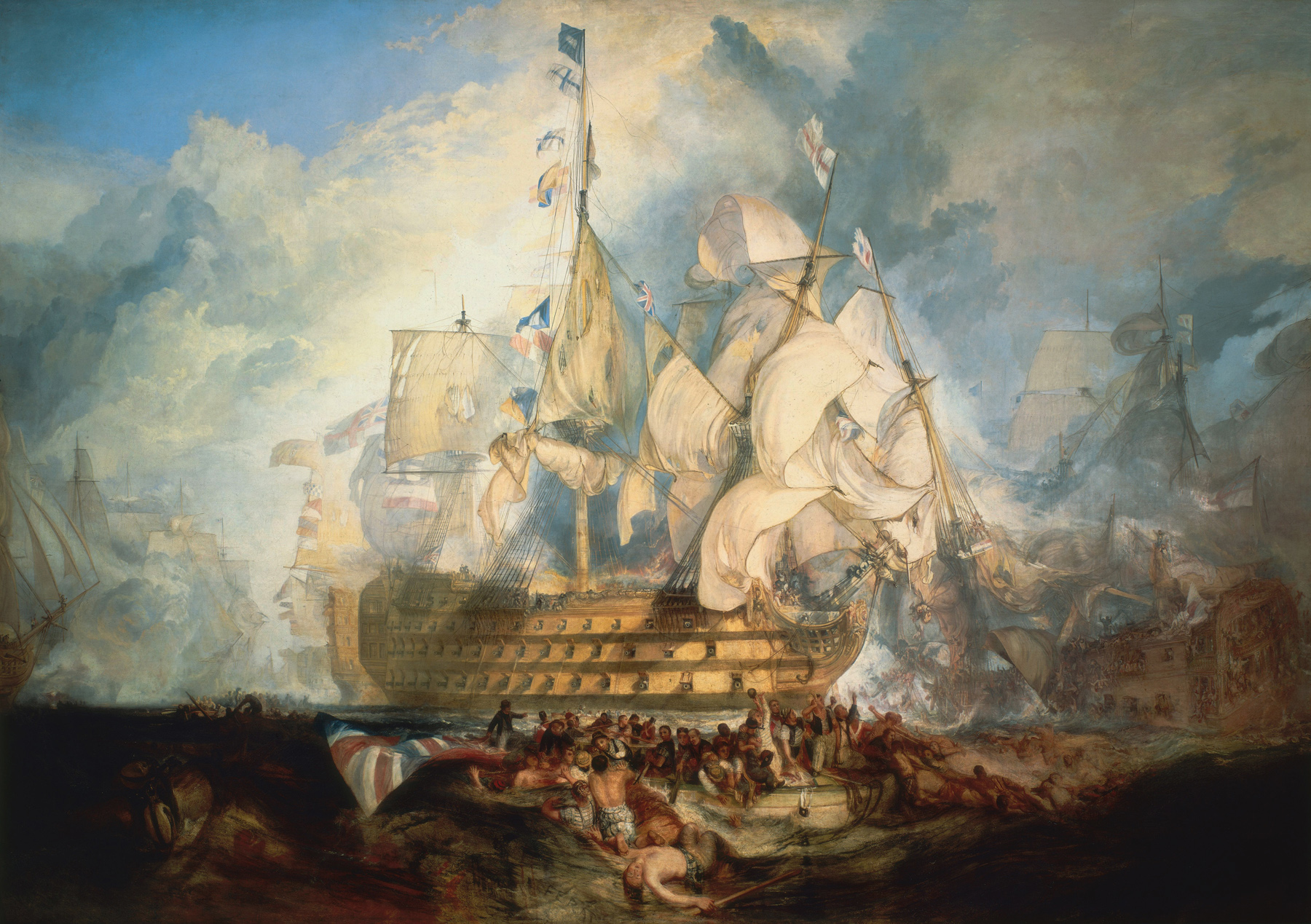Interview with the curator of Naval History at the National Maritime Museum, Dr James Davey
What was the Victory’s role at Trafalgar?
Its key role was as flagship for the commander in chief, Horatio Nelson, but it also had a secondary role of leading the northerly column into battle. Nelson’s major tactical move was to divide the fleet into two as they advanced toward the Franco-Spanish fleet. It placed itself at the most dangerous position, right at the front of the line.
What condition was it in going into the battle?
It was a very old ship and was about 40 years old by the [time of the] battle. However, there had been an extensive amount of repair work completed during the peace of Amiens that preceded the Napoleonic War. So relative to other ships in the fleet, it was in relatively good nick.
What tactics did it use in the conflict?
The idea with two columns was that Nelson could get his ships into battle much quicker than in one long line.
Did it have a direct rival on the French/Spanish side?
Not a direct rival, but the flagship of the Spanish was the St Santisima Trinidad, which was larger and more powerful. In the battle itself, Nelson actually aimed the Victory at his rival commander in chief, Villeneuve on the Bucentaure, the French flagship.

How much damage did it sustain and how and was it? Can we see any of this damage today?
The Victory received a considerable amount of damage as it was stationed at the front of the line and received a lot of cannon fire. The ship was very badly damaged and was unable to sail after an hour or two. After the battle it had to be towed back to Gibraltar. It was then reliant on other ships coming to its support to avoid it being boarded. The HMS Temeraire played a crucial role to stop it being boarded, launching a broadside just at the right moment.
Did it sink any opposing ships or at least damage them greatly?
It was surrounded and bombarded by numerous enemy ships but was able to reply in kind. Initially it exchanged fire with the Bucentaure but then became involved in a very long battle with the Redoutable, firing cannonballs into each other. It didn’t capture a ship on its own but certainly played a role in the French and Spanish surrender.

How was most of the fighting done? Broadside cannon shots? Boarding other ships?
The British superiority in battle was based on gunnery tactics and its ships were able to fire more accurate shots than the enemies. The French and Spanish had much more soldiers on their ships so it was in the British interest to have a battle based on gunnery. When a boarding party threatened, this showed British vulnerability.
Who were the key people on the ship in the battle?
Mid level officers and crewmen.
Give us an insight into the conditions on the boat? How did it differ to peacetime?
A naval ship was a very tight and cramped place. People lived in each other’s pockets. When a battle was nigh, personal possessions would be put away, hammocks hung up and guns distributed. The living quarters would become a battle station. This was just as true of officer’s cabins as well. Within a few minutes, the [entire] ship could become a battle station.

Did the crew cope with the demands of battle?
It played an essential role. It led the line and set an example. It was one of the first ships to engage with the enemy and during the battle it expended over 3,000 shots, which is an incredible amount. Right seven shots per gun per hour, which may not seem like a huge amount but it is an incredible feat of gunnery.
What happened to the hierarchy immediately after Nelson’s death? Was there anarchy?
Certainly no anarchy. The naval world is a very segregated, hierarchical one so if someone was injured or killed, there was always another to take on that role. Thomas Hardy took on the leadership of the vessel after Nelson fell. It didn’t affect the way they fought the battle, but afterward there was a widespread feeling of mourning and loss after Nelson’s death was reported.
What happened in the aftermath of the battle?
Immediately after the battle there was a great storm that lasted a few days. In this storm a number of captured enemy ships were lost at sea or recaptured by the French and Spanish. The Victory headed back to Britain, was patched up and continued to serve in the Napoleonic Wars under Sir James Saumarez and the Baltic fleet.
How suited was the Victory to a battle like Trafalgar?
The Victory was designed for battles just like Trafalgar. It was a floating gun deck and with 104 guns it was one of the largest in the Royal Navy at the time.

For more epic tales of classic conflict, subscribe to History of War and save 30% off the cover price!
